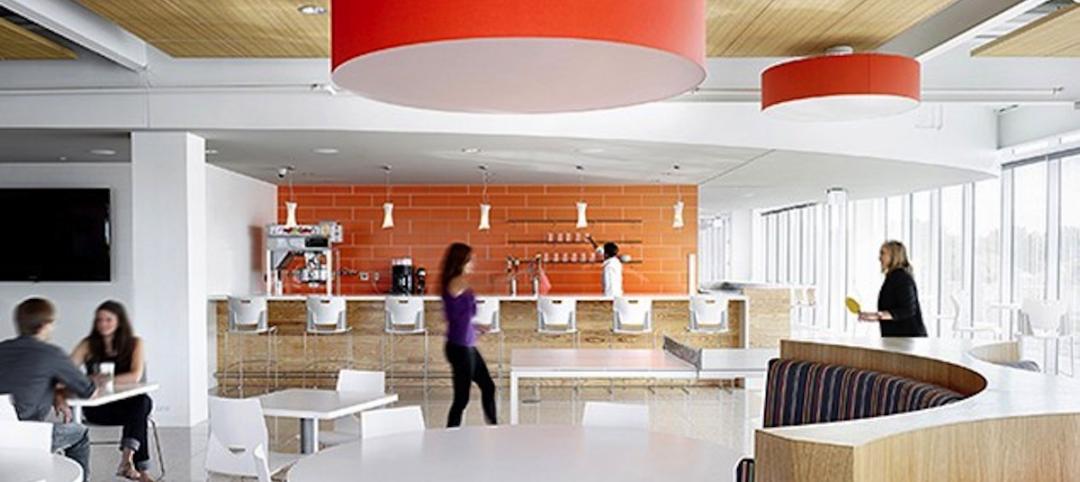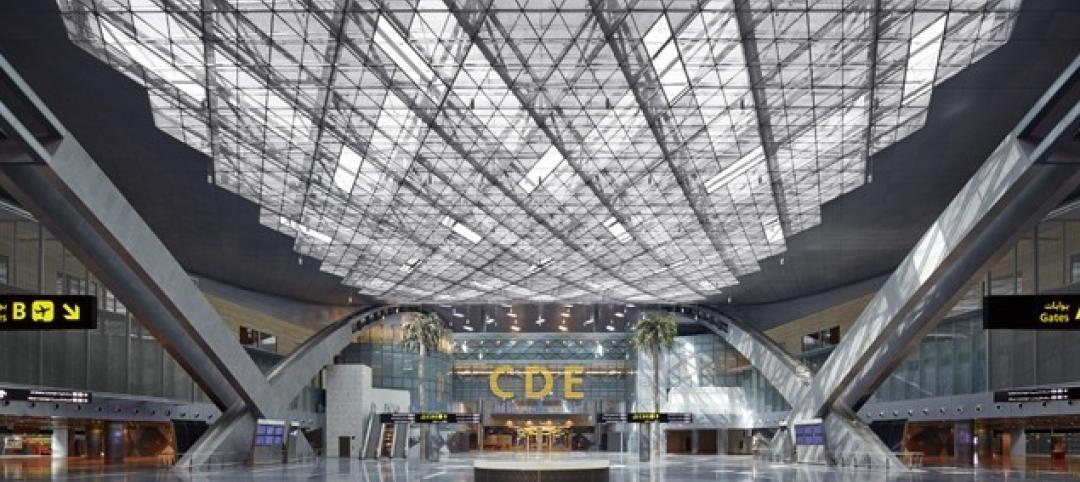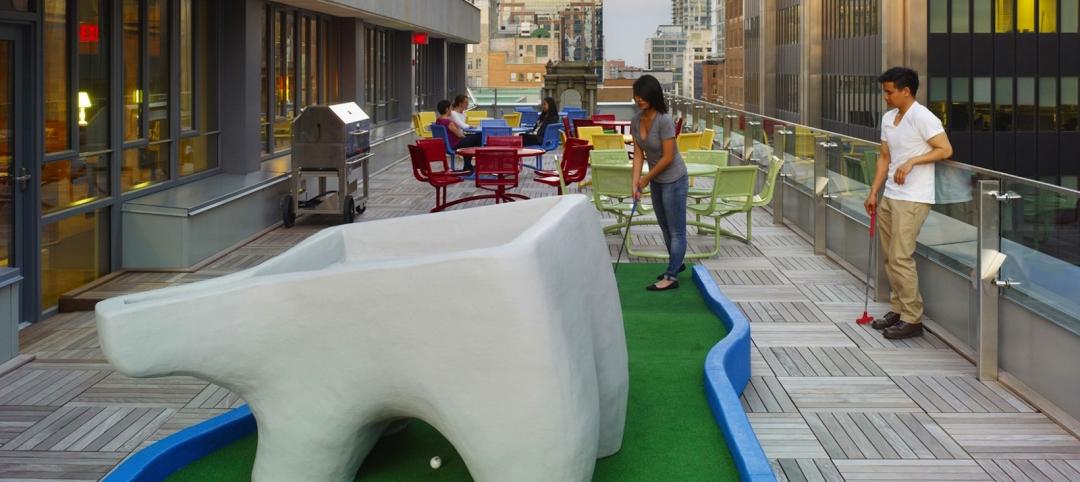HOK has released a new benchmarking report that examines design and work-style trends at leading financial services firms over the past three years.
This new HOK Benchmarking Report provides information on recent trends affecting the industry, an analysis of how organizations are using office space, and metrics for space standards based on recently completed workplace projects for financial services firms in New York, Toronto, and London.
Companies are eager to understand the link between their work environments and organizational performance. The space standards and findings in this report can provide a baseline to help corporate real estate and facilities professionals identify and respond to opportunities for improvement.
The findings are derived from more than one million square feet of spatial data gathered from 11 top-tier financial services firms. HOK collected and analyzed nature-of-work surveys and observational study findings from thousands of employees to understand space utilization and how people actually work in their office environments.
One of the report’s key findings is that growth often can be accommodated within existing space, which is consistently underutilized by an average of 48%. When undertaking renovation projects, firms should consider the creation of multi-purpose environments that encourage more efficient, collaborative and innovative use of space.
“To further strengthen our findings, we triangulated our data sources,” said Isilay Civan, HOK research and strategic innovation specialist and a co-author of the report. “We used a mixed methodology for data analysis that provided the ability to compare and crosscheck our findings across self-reported, observed and recorded spatial data.”
Other key findings:
- Though the financial services industry is growing, it’s facing increased competition from non-traditional service providers influenced by rapid changes in the technology sector.
- Meeting space should be appropriately sized and flexible. Top-tier financial services firms devote more than half of their collaboration space to rooms that accommodate seven or more people.
- More than 90% of individually assigned spaces are open office.
- Mobility strategies are common but adoption rates vary. During periods of high occupancy, there are close to two people for every seat or workstation.
- Building efficiency is tight—as is the average area per seat.
The benchmarking report identified these potential areas of improvement for organizations seeking to enhance human capital and productivity:
- Space for focused work
- Overall impression of the workspace
- Tools and technology in the workspace
- Ergonomics
- Space for private calls
- Adaptable/well-laid out workspaces
- Sufficient acoustical separation
“We didn’t want to simply report the data findings without recommending potential next steps and solutions,” said Rob Sannella, a senior HOK strategic consultant and a co-author of the report. “In this report, we have translated our findings into actionable items to inform and enhance design decisions.”
More from Author
Life at HOK | Apr 21, 2015
How to create an 'emotionally intelligent' workplace
Emotional intelligence is the leading predictor of performance in the workplace and the strongest driver of leadership and personal excellence.
Life at HOK | Jan 6, 2015
Airports apply technology to maximize hospitality
Technology is transforming the guest experience and enabling designers to reimagine a new hospitality-oriented destination airport terminal.
Life at HOK | Dec 28, 2014
The future of airport terminal design: destination status, five-star amenities, stress-free travel
Taking a cue from the hospitality industry, airport executives are seeking to make their facilities feel more like destinations, writes HOK's Richard Gammon.
Life at HOK | Nov 17, 2014
Hospitality at the workplace: 5 ways hotels are transforming the office
During the past five years, the worlds of hospitality and corporate real estate have undergone an incredible transformation. The traditional approach toward real estate asset management has shifted to a focus on offerings that accommodate mobility, changing demographics, and technology, writes HOK's Eva Garza.
Life at HOK | Oct 13, 2014
The mindful workplace: How employees can manage stress at the office
I have spent the last several months writing about healthy workplaces. My research lately has focused on stress—how we get stressed and ways to manage it through meditation and other mindful practices, writes HOK's Leigh Stringer.
Life at HOK | Sep 9, 2014
Using Facebook to transform workplace design
As part of our ongoing studies of how building design influences human behavior in today’s social media-driven world, HOK’s workplace strategists had an idea: Leverage the power of social media to collect data about how people feel about their workplaces and the type of spaces they need to succeed.
Life at HOK | Aug 16, 2014
The science of learning: Designing the STEM learning facilities of the future
New technology and changing pedagogies are influencing how to best teach a generation of learners who have never known a world without smartphones or tablets, writes HOK's Kimberly Robidoux.
Life at HOK | Aug 5, 2014
Will driverless cars kill the parking structure?
A report from Deloitte highlighted how driverless cars could dramatically alter car ownership in the future, pushing the pendulum from ownership to rentals and ride sharing.
Life at HOK | May 19, 2014
What can architects learn from nature’s 3.8 billion years of experience?
In a new report, HOK and Biomimicry 3.8 partnered to study how lessons from the temperate broadleaf forest biome, which houses many of the world’s largest population centers, can inform the design of the built environment.
Life at HOK | Jan 30, 2014
How reverse engineering nature can spur design innovation
It’s not enough to copy nature. Today’s designers need a deeper understanding of environmental nuance, from the biome in.
















